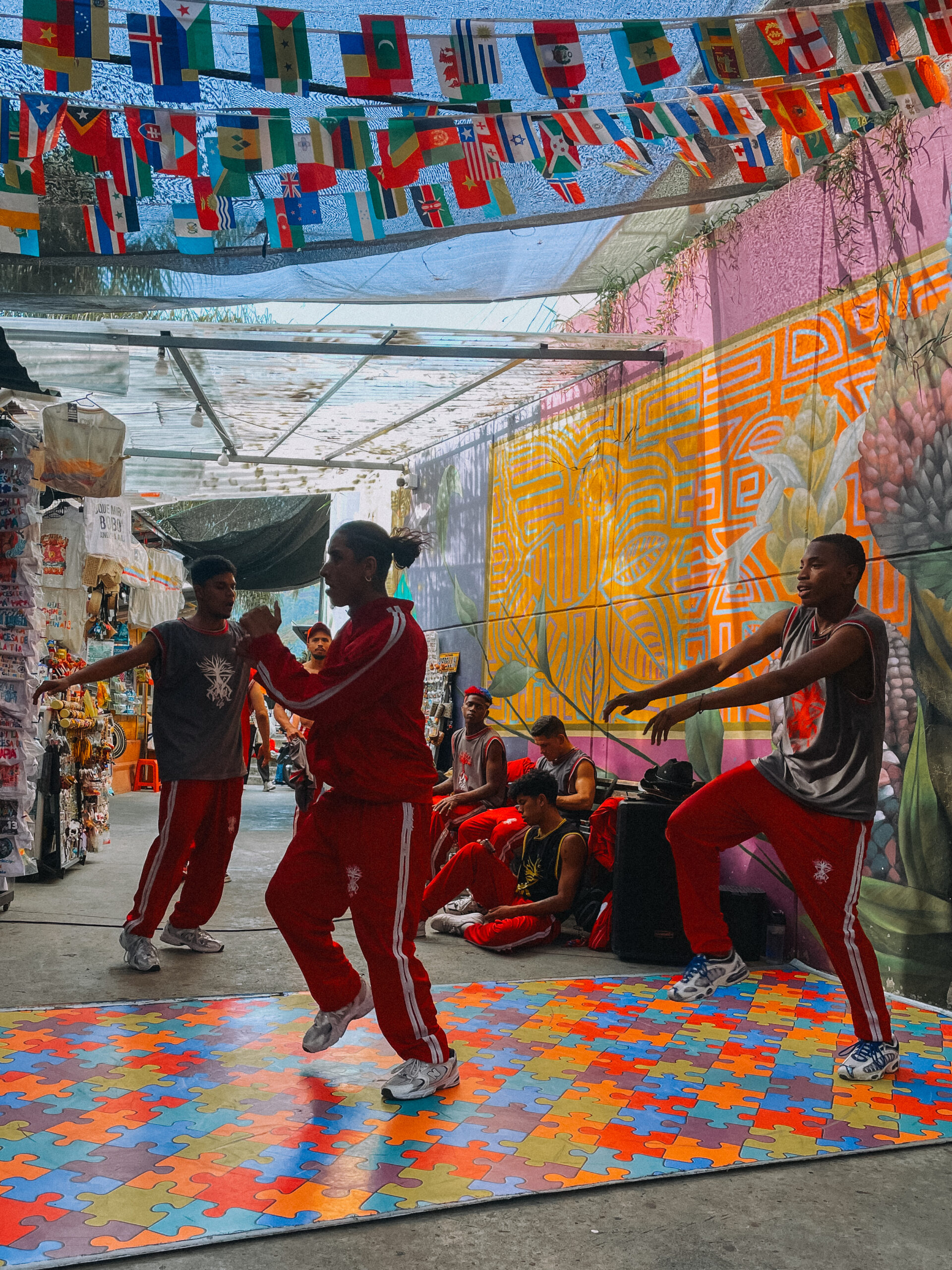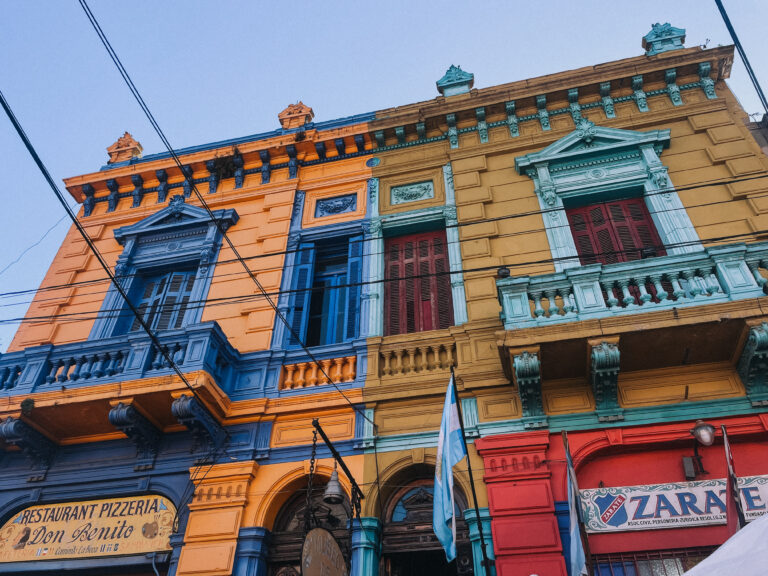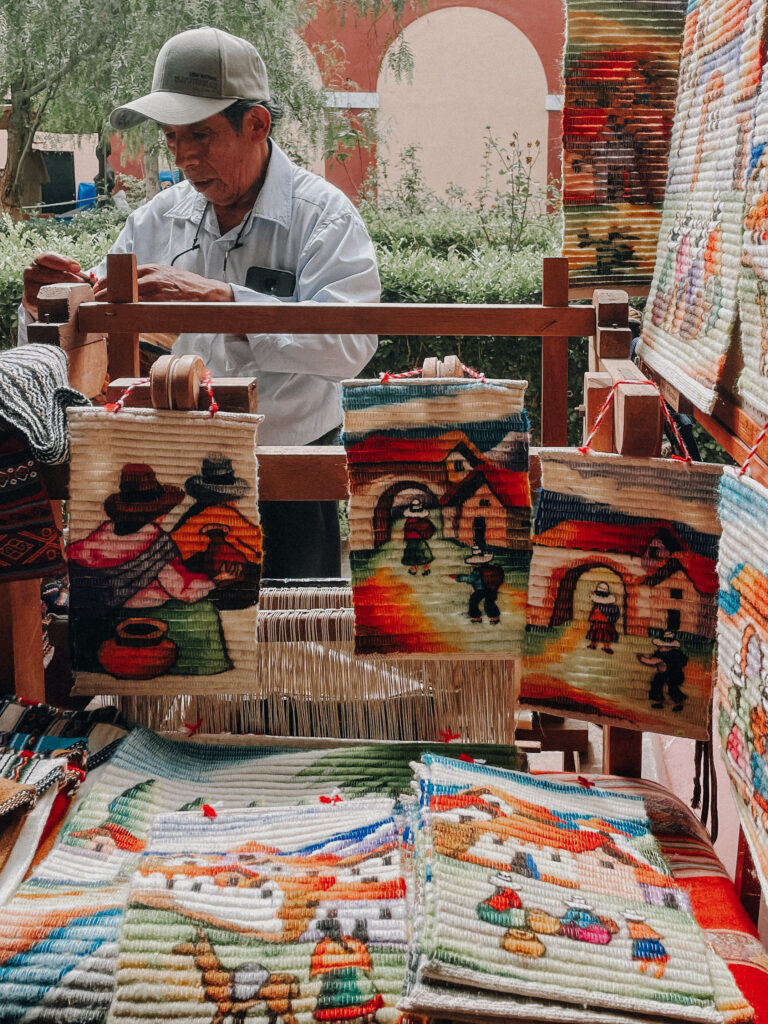Comuna 13 Tour: Is Comuna 13 in Medellín Worth Visiting?
Disclaimer: This post may contain affiliate links, which means I may earn a small commission if you purchase through my links, at no extra cost to you! I only recommend products and services that I genuinely believe in or have used, and any commission will be used to fund important things like iced lattes and overpriced kombucha. Thanks for the support!
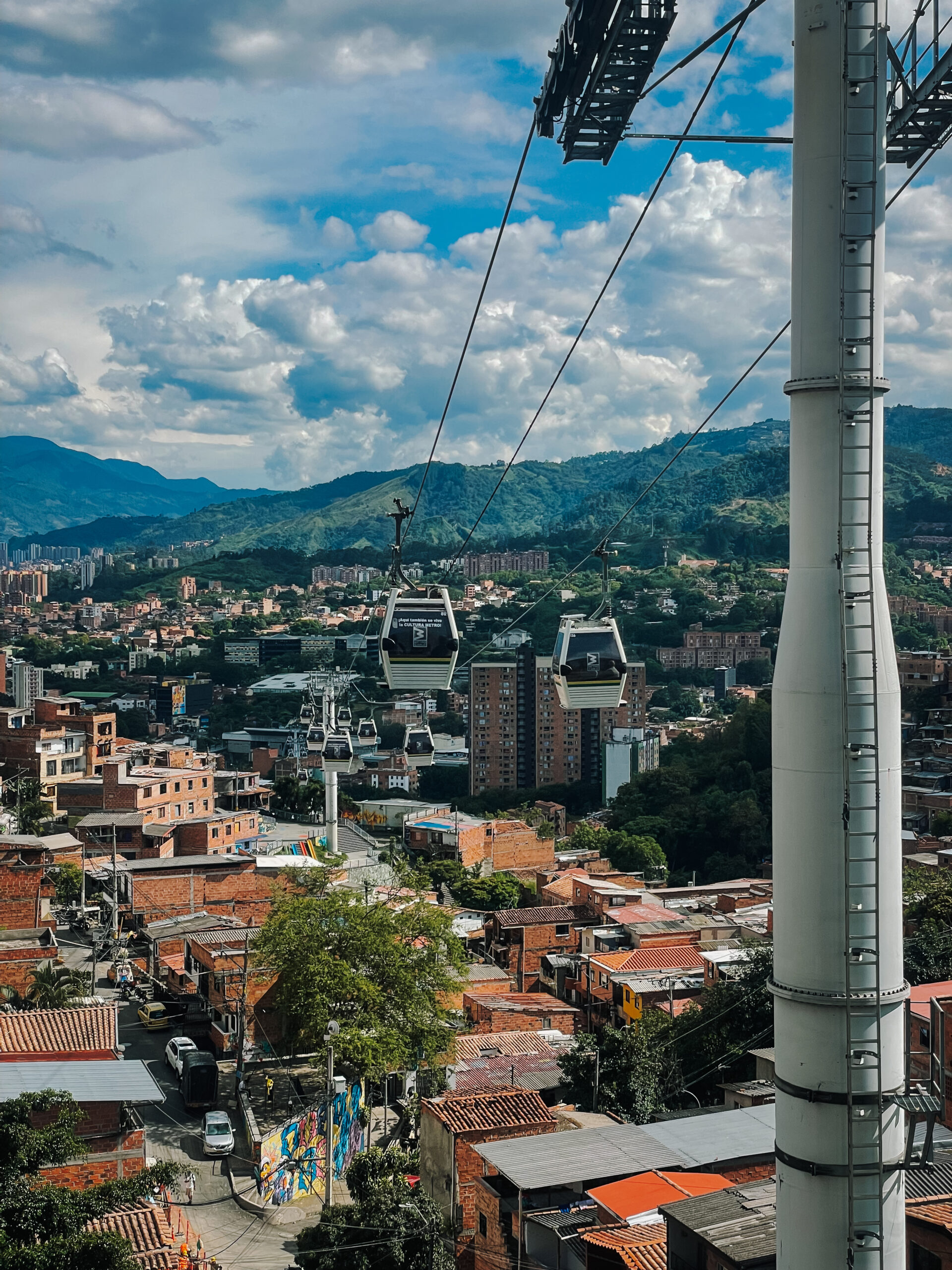
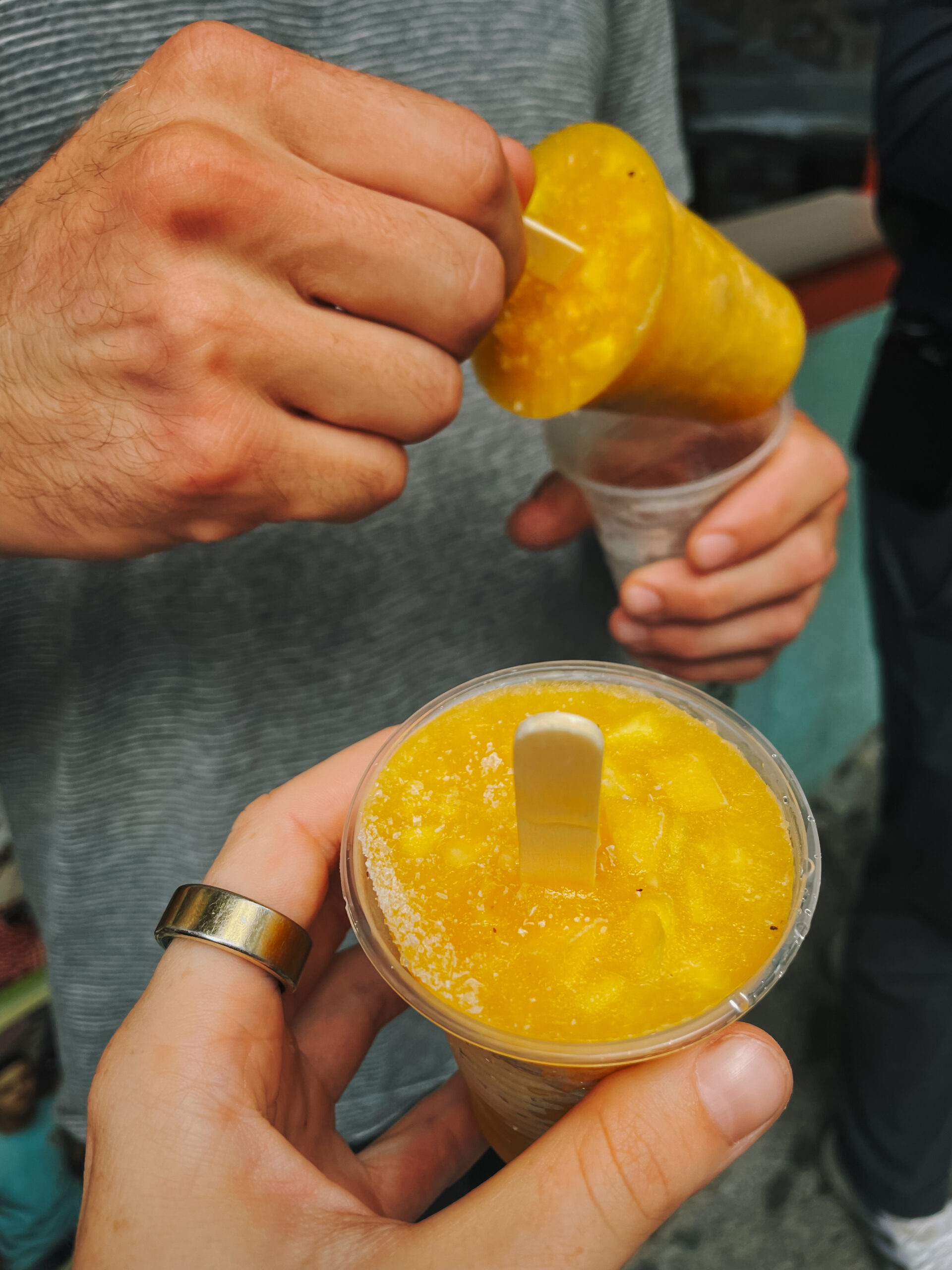
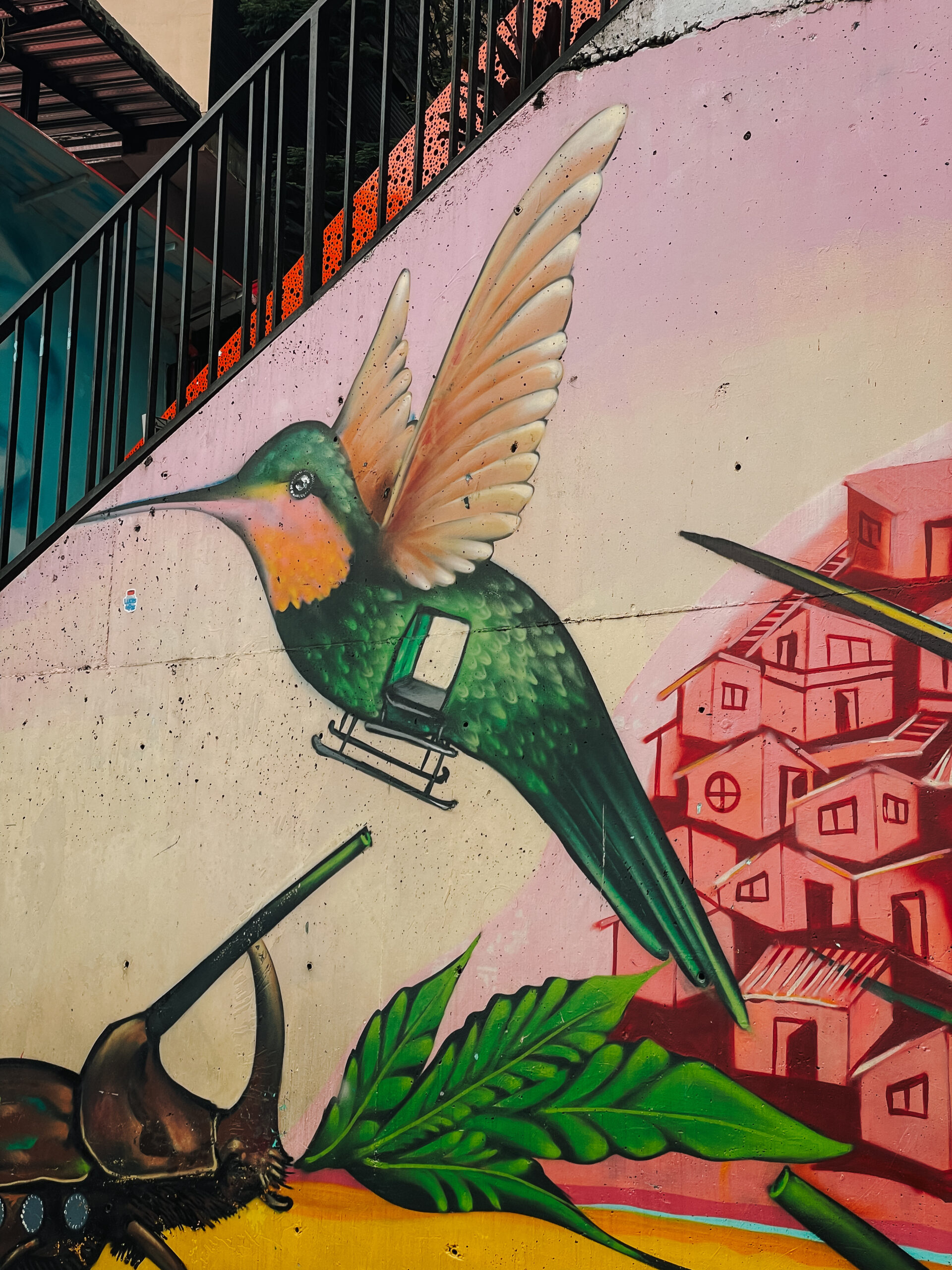
Of course, the answer to this question is: absolutely, the Comuna 13 tour was definitely worth it. In fact, it was one of my boyfriend and I’s favorite day out of our entire South America trip. The Comuna 13 tour encompassed everything I love. We dove into the history and culture of Medellín, saw all forms of artistic expression, and ate delicious street food.
Before diving into the summary of the day, here’s some general information . . .
Which Comuna 13 Tour to Book?
The tour we booked was the following:
This specific Comuna 13 tour was organized, informative, and our guide, Kevin, was so amazing that we’ve remained friends with him even after it ended. Also, it was less than 15$ for an ENTIRE DAY!
Comuna 13 Tour: Quick Summary of What’s Included
Transportation Handled For You!
Not only did we visit Comuna 13 itself, but we got to ride the infamous cable cars! Doing so would have been a bit confusing on our own, so it was great to have all the transportation handled by our guide.
Food & Drinks Included
In Comuna 13, I was honestly blown away by how much was included for the price of the ticket: two street food snacks and a drink! The tour also lasted pretty much all day and therefore, was an insane value for the cost.
Everything about this specific Comuna 13 tour was great, so of course this is the one I’d recommend! The rest of this article will explain everything further.
👉Pro Tip: Getting to the Comuna 13 Tour
Ironically, we almost missed this tour (which would have been the ultimate screwup)! The tour is conveniently located for anyone living in Poblado, where most tourists stay.
However, because we were in Envigado, a bit further, we needed to Uber. If you too are in this situation, allocate time for transportation! It took forever to get a ride, and there was a ton of traffic. When we eventually got to the meeting point (which is actually inside the Poblado train station), we were totally late.
Luckily, Kevin graciously waited and found us. If you want to avoid the embarrassment I felt of showing up late, just give yourself enough time!
Now for some background . . .
👉If you want to do your own research, you can jump to:
What to Expect in Comuna 13 Tour
Why is Comuna 13 so famous?
Quick History Lesson on Medellín:
Though the guide will go through this, I wished I’d done a little research on the history of Medellín before booking the Comuna 13 tour. Good thing I’m here to provide you with more information so you don’t have to. (I’ve gathered these facts from this activity, another walking tour we booked, and my own research, doing my best to fact check everything!)
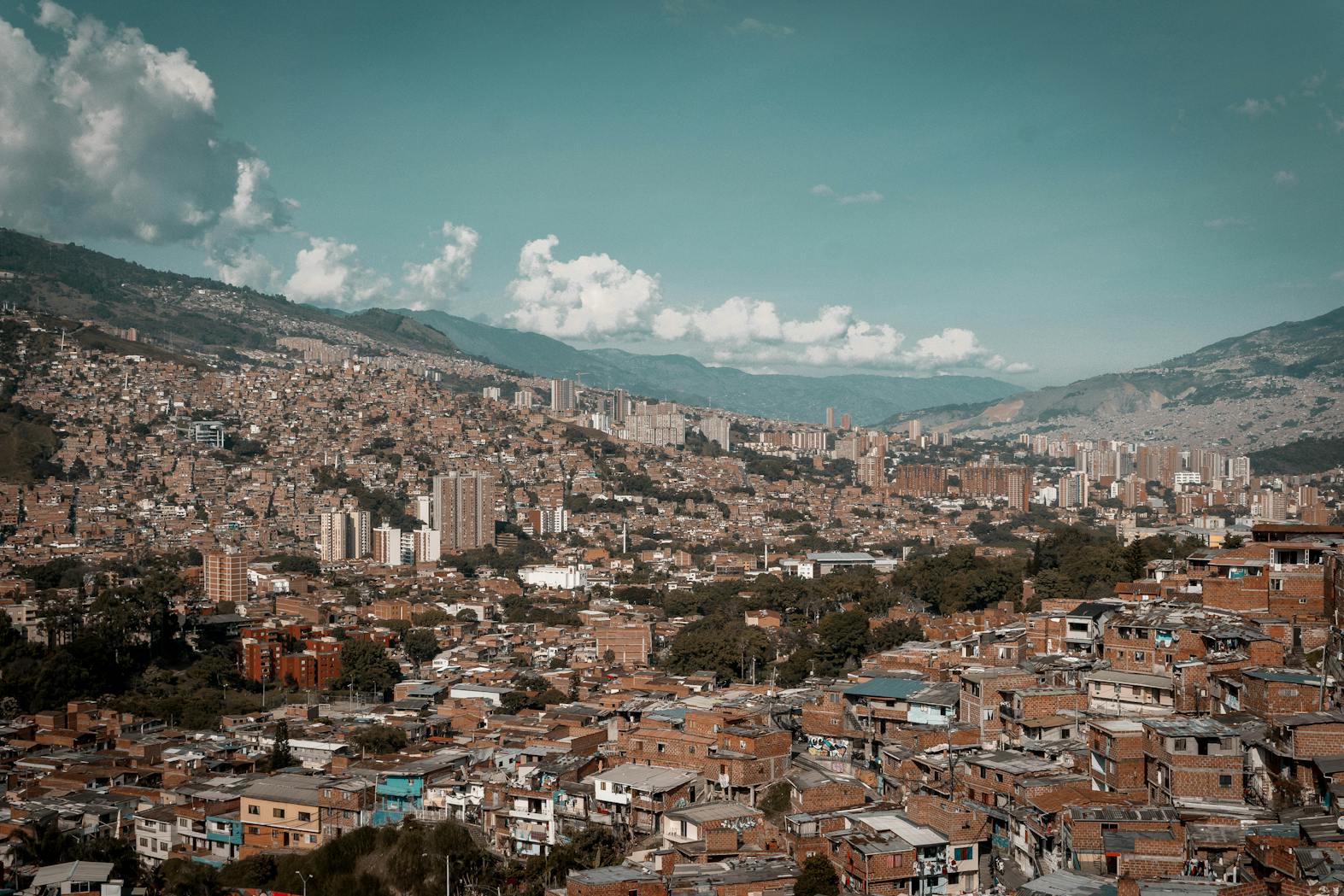
Once the Most Dangerous Place in Medellín. . .
As Medellín grew, there were almost two separate cities forming: the “official” city in the valley, and the settlements in the surrounding hills. However, the shelters in the mountains were not controlled by the government, and therefore, lacked basic services. Because of the poverty, strategic location and lack of government interference, Comuna 13 slowly became an epicenter of illegal activity.
Drug Trafficking and Cartel Influence
While there were other similar hilltop communities, Comuna 13’s location made it particularly beneficial for the cartels. Located right on the other side of the mountain are the San Juan and Atrato rivers, creating transit points for drug trafficking. Smugglers could take these routes to the Pacific Ocean, making Comuna 13 a valuable location.
Kevin explained that from a very young age, boys were expected to do whatever means necessary to bring home money. As family members were often killed, and other opportunities weren’t available, some boys had no choice but to make money trafficking drugs. If it wasn’t voluntary, many kids were also forced or recruited into the cartels due to the control they had over the community.
Self -Reflection
The idea of having “no choice” but to sell drugs is a concept people can be quick to judge. Kevin’s description made me look at my own privilege, later deepening the admiration I felt towards Comuna 13 for their societal change.
Guerrilla and Paramilitary Presence
In combination with the cartels, the guerrilla forces (armed organizations with intense warfare tactics) of Medellín had a strong presence. On the other end of the political spectrum were paramilitary groups, unofficial military associations, who also fought for control. Conflict between the two led to continuous conflict and violence.
Operation Orion
Even when the “official” government got involved, there was corruption and controversy. For example, in 2002, the government enacted Operation Orion as an attempt to remove guerrilla forces. Though they succeeded in this, there were shady consequences and an excessive use of military force.
Bodies disappeared, innocent bystanders were killed during shootings, and the paramilitary groups continued violent acts even after the operation.
Separation Between Comuna 13 & the Government
The strategic lack of road systems in Comuna 13 also meant it was nearly impossible to invade. The complex maze of houses, with only stairs connecting them, could not be navigated. Anyone who tried to enter was at risk of being shot at from above.
As the government and community became more and more separated, resentment grew. Places like Comuna 13 were left to fend for themselves, creating the perfect storm for these violent groups to take control.
An Amazing Societal Transformation
Overtime, however, through positive changes in the government and infrastructure, as well as community efforts, Comuna 13 is now completely different. It is now the greatest example of the reform in all of Medellín, a place for visitors to witness this transformation. The pride the locals have in this change is evident all throughout the city, which I’ll touch upon deeper as I explain the tour itself.
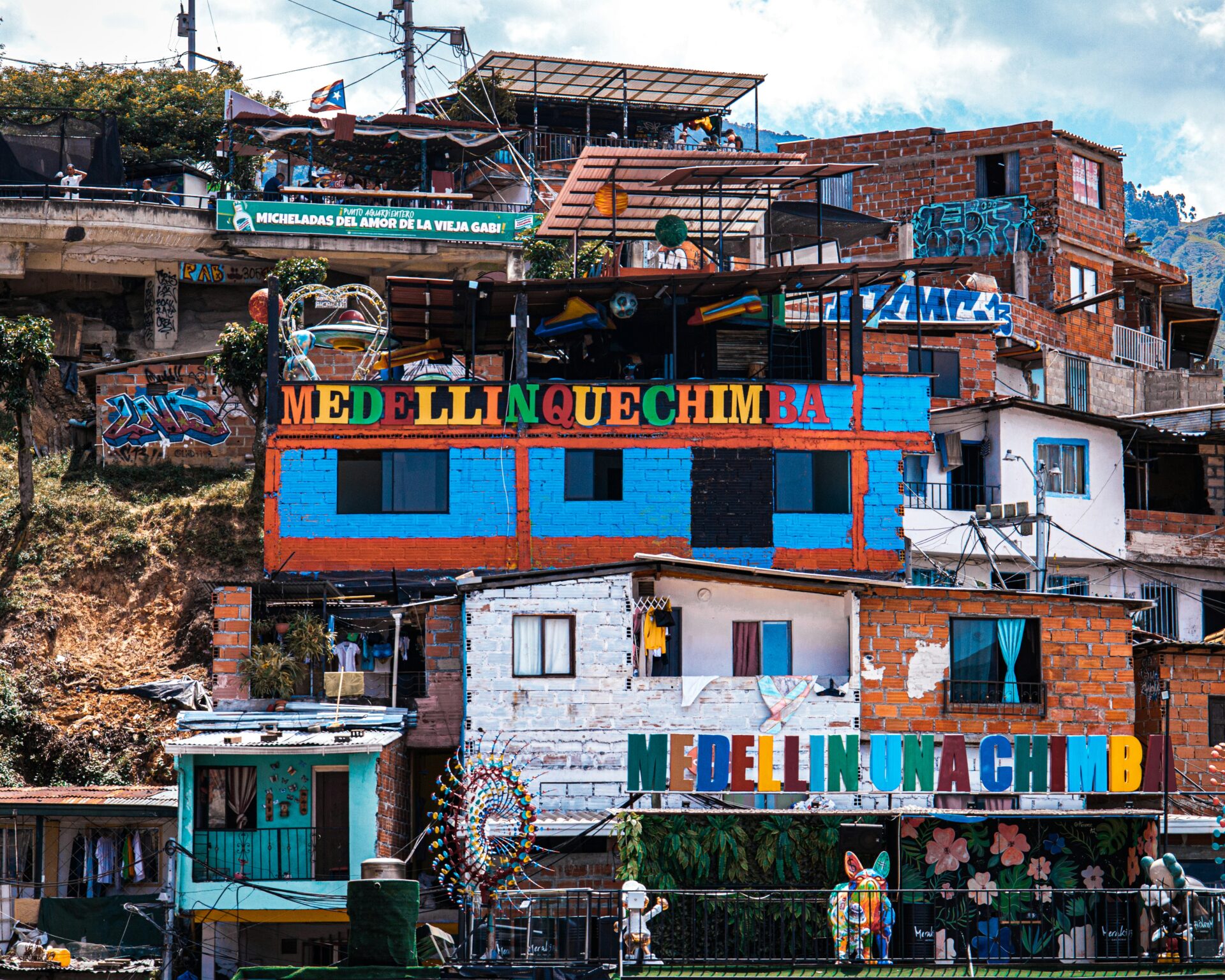
Because of Comuna 13’s past, here are some common questions:
Is Comuna 13 Safe to Visit?
With everything I just mentioned, you may be still wondering if Comuna 13 is safe to visit. The answer is yes! We felt extremely safe through the entirety of our Comuna 13 tour, though obviously dangerous things still happen in all cities. Like anywhere, simply be aware of surroundings and try not to be a stupid tourist.
Is it Safe to Visit Comuna on Your Own?
I guess the technical answer to this question is, yes? However, I think it’s both safer and more beneficial to go with a guide. As the layout was created without any government planning, the district is extremely confusing to walk through. It was literally meant to puzzle invaders, so it’d be easy to get lost and potentially end up in the wrong area. Also, without a guide, you’d miss out important information, like the stories behind each mural!
As I mentioned earlier, this tour also includes all of the transportation needed to get to Comuna 13. We took two metro trains and a bus to arrive at the entrance, something I personally wouldn’t have wanted to figure out. I’m sure with some quick research you could get there, but why not just enjoy the sights?
Is Comuna 13 Safe to Visit at Night?
If you do choose to visit Comuna 13 on your own, I would also stick to visiting during the day. Even when we asked Kevin about this, he said it’s not a place he’d want to navigate at night. Though there are bars and restaurants throughout, the steep stairs and windy alleys could be dangerous if you don’t know the area. He said he was less worried about the Comuna 13 locals, and more concerned about tourists.
These photos I took below give you an idea of the layout . . .

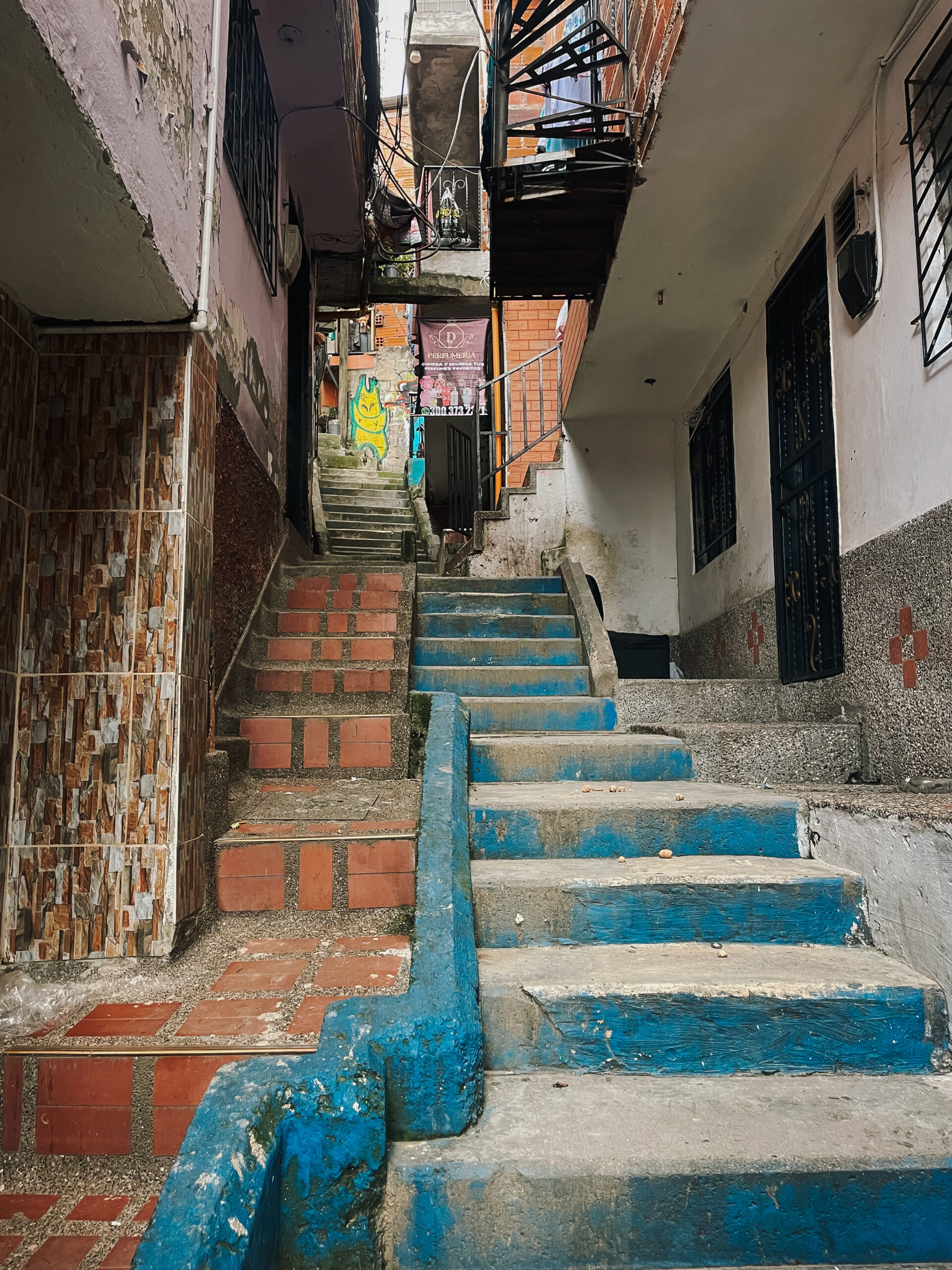
Is it Respectful to Visit Comuna 13?
I was wondering about this question myself during the tour, so we asked Kevin about his thoughts. He described this as a gray area question, like most other situations involving tourism. However, there are ways to visit Comuna 13 that are both beneficial and respectful to the locals.
Supporting Positive Economic Change
Kevin first explained to us that the community is extremely proud of their transformation. Their positive and warm energy made me feel welcomed. As opposed to how they were forced to earn a living in the past, buying their products and services helps the community prosper and continue to change.
Conscious Tourism During Comuna 13 Tour
On the other hand, it’s obviously important that visitors still respect the community of Comuna 13. This is not a time to bring up the infamous Pablo Escobar and make a big deal about the past. Instead, it’s a time to appreciate the incredible changes of the city! Kevin explained that it can be frustrating to see tourists treat Comuna 13 as merely an Instagram spot, without having a desire to learn.
Be aware that in addition to the vendors, there are also people simply living daily life. I’d try to stick with the guide, avoiding accidentally walking into someone’s personal space. In terms of taking pictures, try to be aware of who’s there performing and who’s not.
Match the Energy!
Kevin also encouraged us to match their energy! The performers and artists are so passionate and energetic, relying on visitors to spread awareness of their talent. These new forms of expression are what replaced the prior violence. Instead of merely gawking at them, show your appreciation!
They are super humble people, never begging for tips. If you can, take their Instagrams to share their work or leave a small tip!
Alright . . . enough lecturing.
Here’s everything else to expect from the Comuna 13 tour:
Metro Trains & Cables: More than Mere Transportation
The first part of the Comuna 13 tour involved taking a train to Medellín’s metro cables! There are six cable car tracks running all over the city, providing beautiful views from above. However, I was surprised to learn that these cables are also a form of public transportation for the local Colombians!
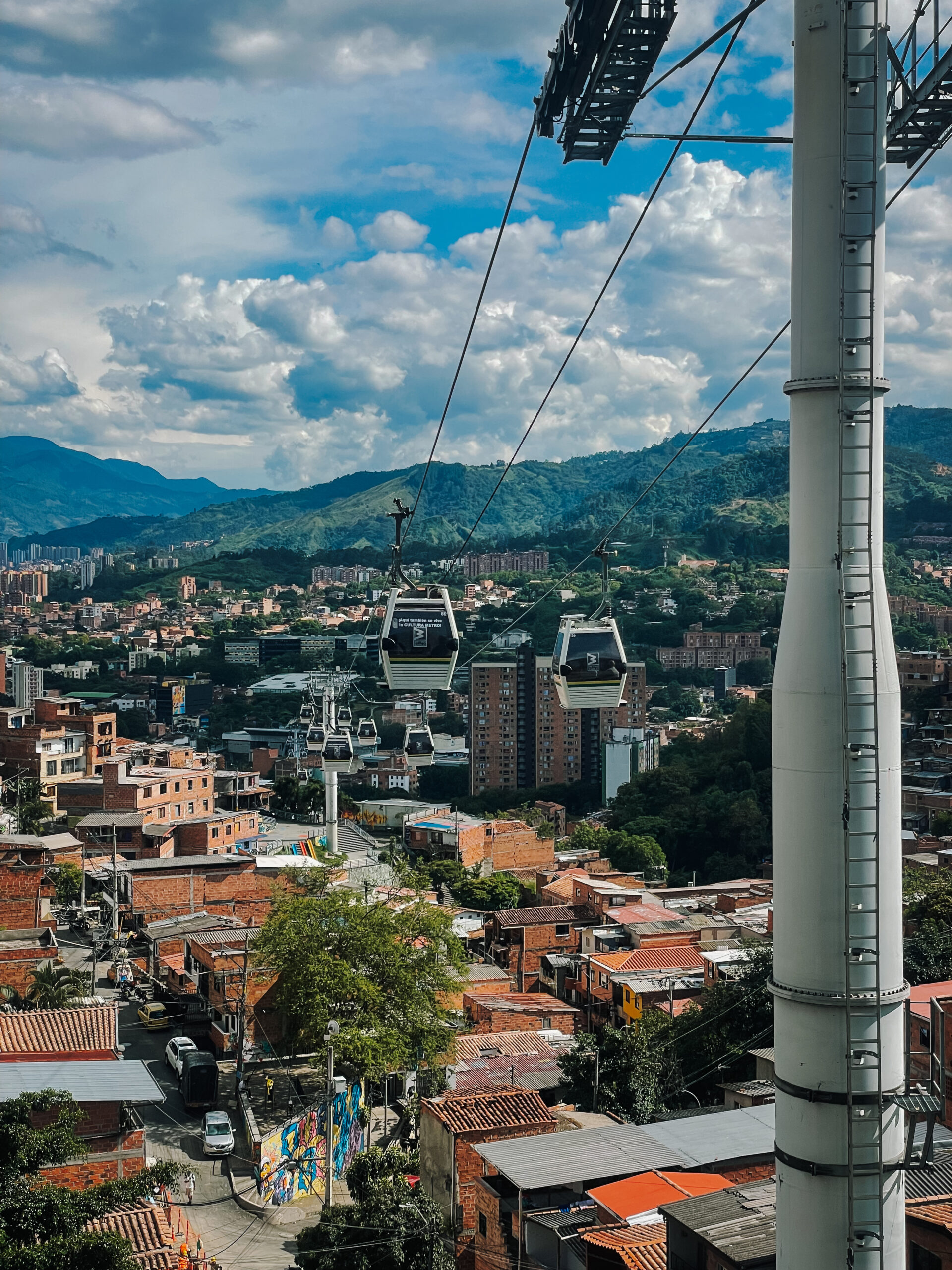

Significance of the Medellín Metro System
Not only is the metro a way of getting around, but a way of connecting the entire community. As I mentioned, there was both physical and mental separation between the hillside communities and the government throughout Medellín’s past. However, one of the first ways that they transformed these areas was by building the metro system!
Accessibility & Opportunity
With the introduction of this public transportation, the rest of the city became accessible to more people. Members of places like Comuna 13 could now affordably and safely travel to the city center, broadening job opportunities as a result. The cost of tickets is cheap; you only have to pay one time once you’re inside the metro, no matter how many stops you have to take.
Medellín‘s metro system was the government’s first successful attempt at building trust between the poorer communities and the city center.
Respect for the Metro System
Because of its significance, the metro system is extremely respected by the community. Not only was it the first metro system in Colombia, but it was also built during the height of the violent past. Therefore, it was a symbol of hope and change.
Inside the stations and trains, there is no trash, nobody sleeping on the floor; it was way cleaner, quieter, and more organized than the subways in New York!
Even in Times of Chaos!
Kevin also described a story about protestors in Medellín a couple years ago. Amazingly, even the protesters hung paper on the metro walls before spray painting their messages, as to not actually vandalize the property. The government also left the paper up, allowing the metro building to be a place of peaceful political movement.
Sense of Community
This story was so interesting to me because it symbolized the power of community. I’ve never seen such respect for something as “mundane” as public transportation. Something so overlooked in most places is a true symbol of peace for Medellín’s community.
Views from the Medellín Cable Car Ride
The views from the cable car ride allowed us to see for ourselves what Kevin had explained in the history lesson. The complex city below contained narrow dirt roads and lots of staircases. The hundreds of windows were once used as watchtowers, allowing criminals to shoot at targets from above.

The views allowed for a deeper understanding of Medellín’s past. After the ride, we took a small public bus to the entrance of Comuna 13, where these factors were even more evident.
What to Expect in Comuna 13 Tour
First Impressions of Comuna 13 Tour
I did not know what to expect in Comuna 13, but I was honestly blown away. This community was different from anything I’ve seen before. My best, one sentence description would be:
A vibrant, colorful labyrinth of narrow roads connecting hundreds of small businesses.
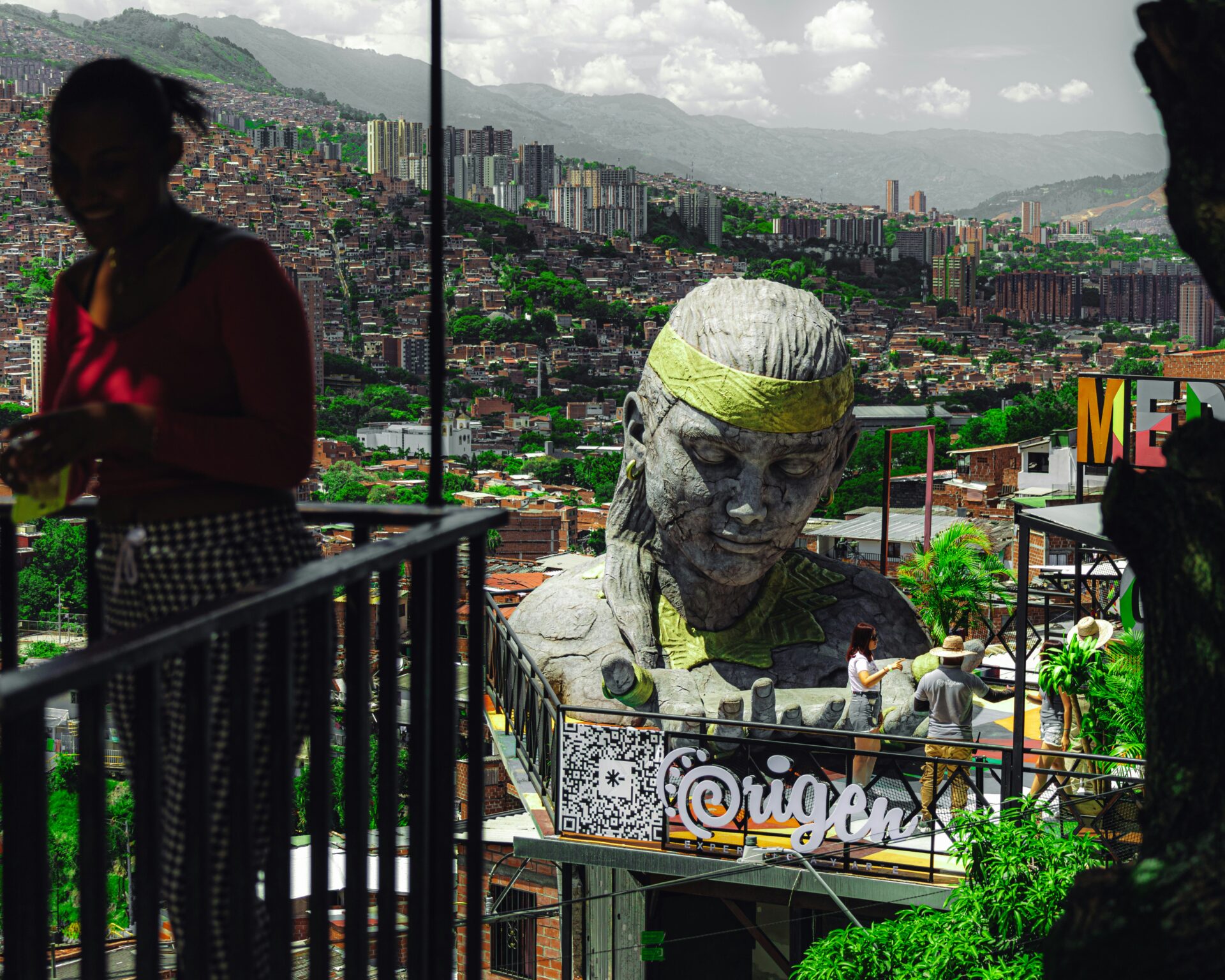
Immediately upon arrival, you can feel the transformative energy and liveliness of this place. With music blasting in all directions, you can see just about any small business that you could imagine.
Amazingly, this community once plagued with crime, now hosts restaurants, bars, museums, clothing stores, etc.
If you’re picturing a small community, think again. There are hundreds of spaces stacked on top one another with no formal organization, each connected through confusing alleyways and staircases.
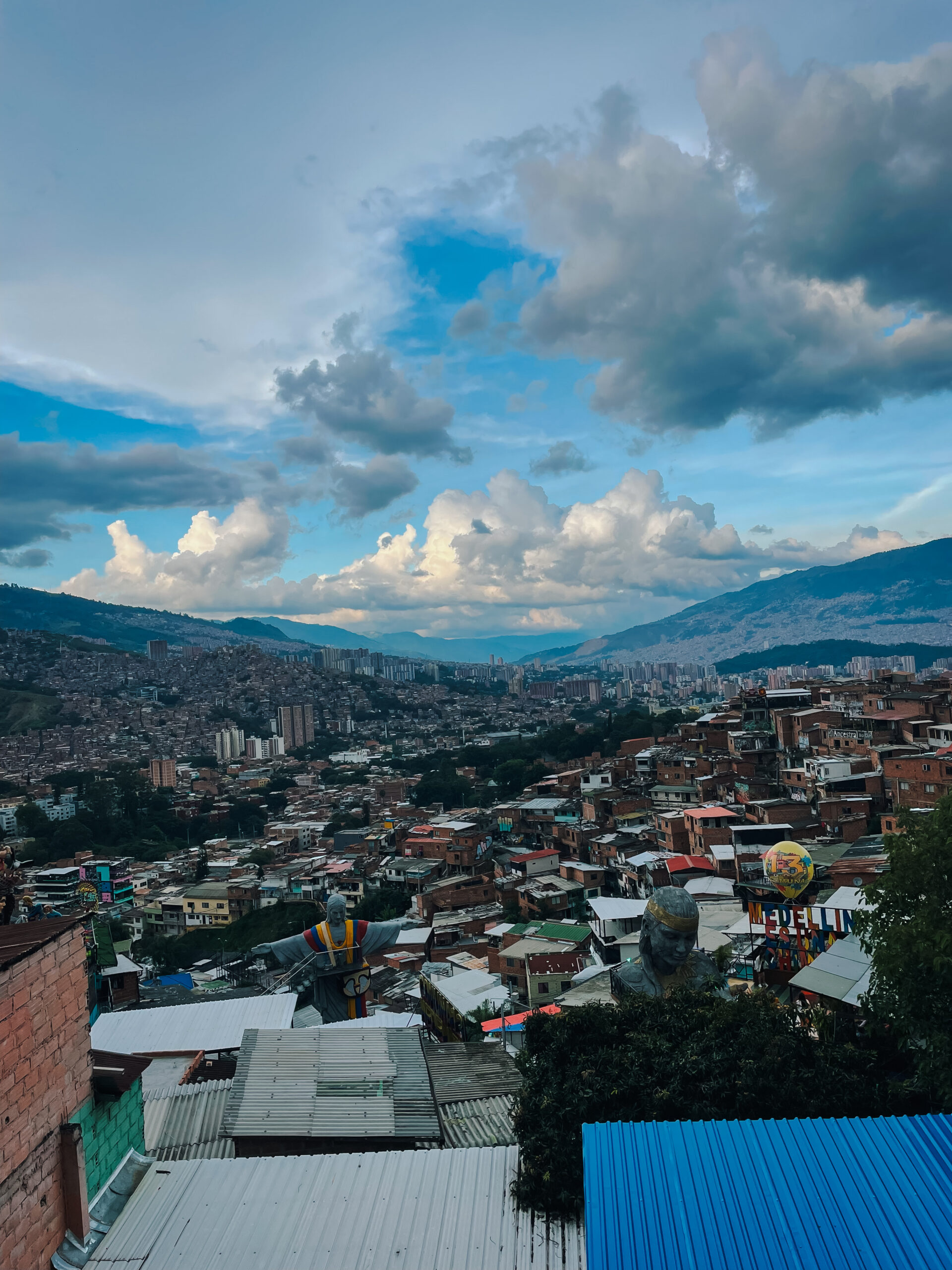
Comuna 13 Escalators
Despite the staircases that were used in the past, there are now six electric escalators within Comuna 13, which we got to ride! This may not sound like a big deal, but once you see the contrast of the old buildings and the modern escalator, you’ll understand.
If they weren’t installed, you’d have to climb the 350 (steep) steps that the locals used for years!
Art and Music in Comuna 13: A New Form of Expression
As an artist myself, one of the most moving parts of the tour was seeing how art and music have replaced the violence that used to roam these narrow streets. Kevin explained that this transformation was an intentional effort made by the government to promote peace.
Graffiti and Murals
One of the striking parts of Communa 13 is the presence of art and color. Everywhere you look there are murals and graffiti art, all symbolizing political stories and peace.
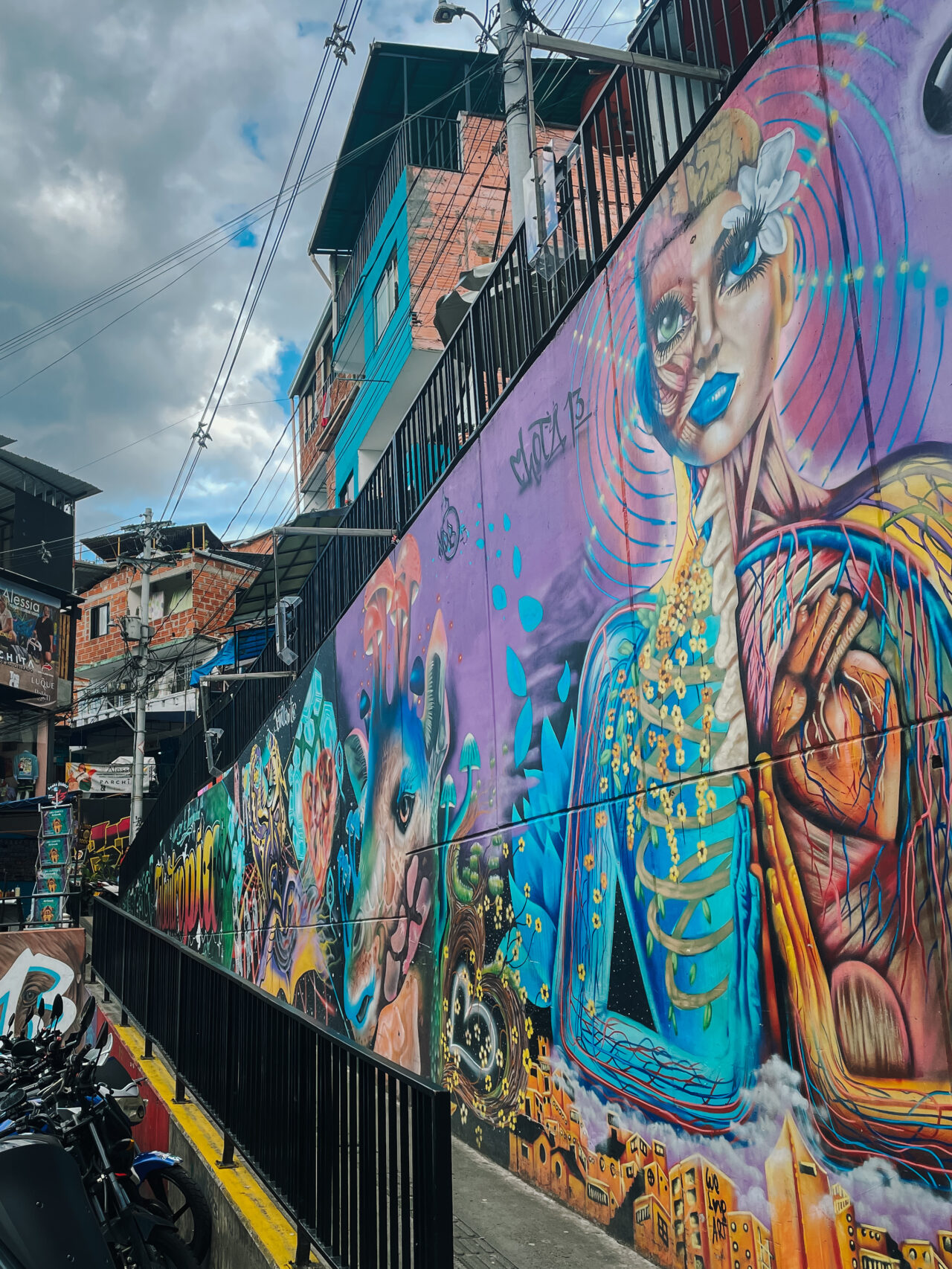
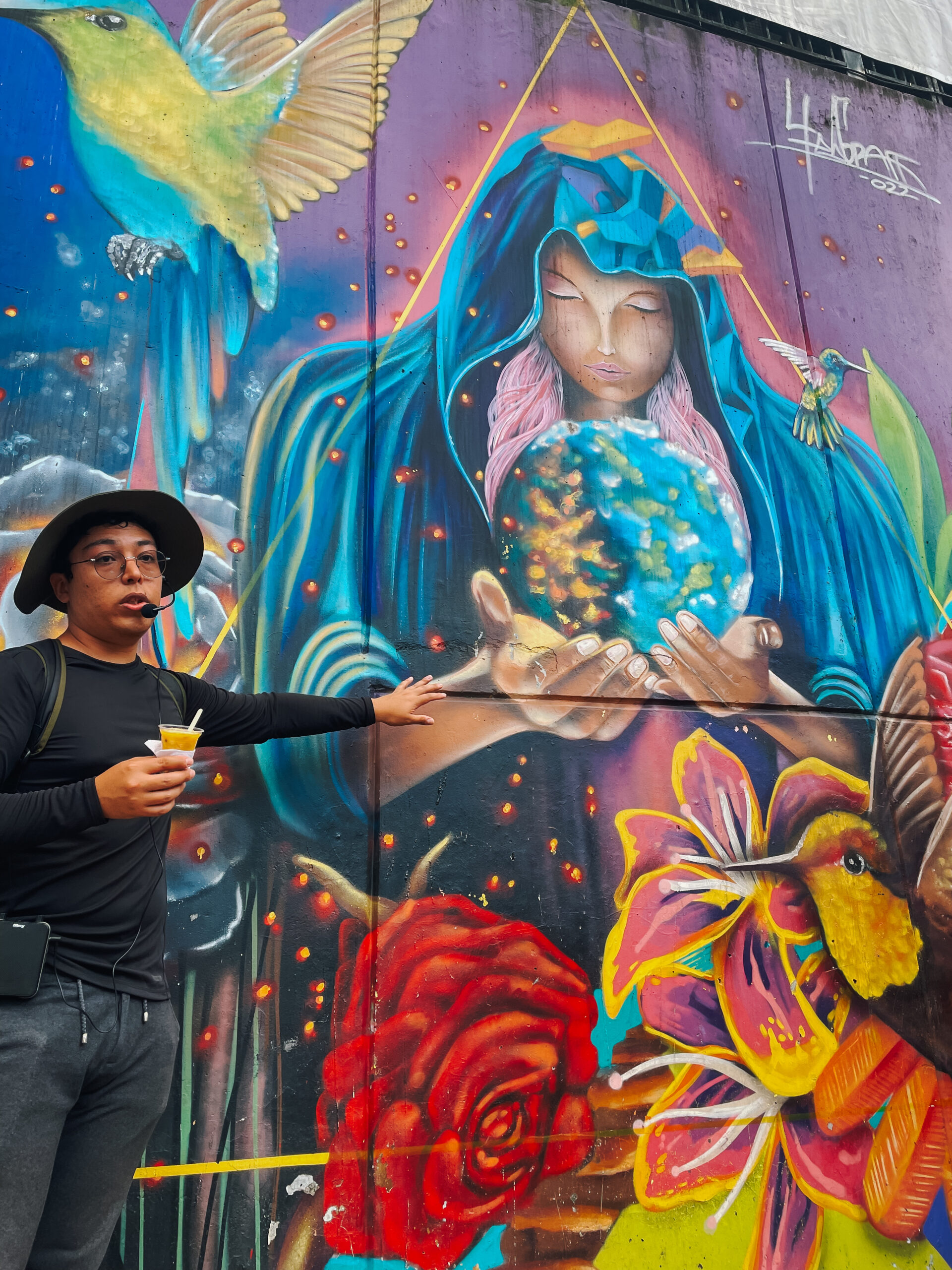
Artistic Symbols
There were motifs throughout all the art that Kevin described in detail. One of my favorite murals was of a hummingbird depicted as a Black Hawk Helicopter. Hummingbirds, known for their ability to fly in many directions, are a symbol of peace. However, during the traumatic Operation Orion, these helicopters were used for violent attacks. The combination of the two in a singular artwork shows an acknowledgment of both the violent past and hopeful future.
Bullet Holes: Powerful Symbols of the Change
Within the walls, you can also see thousands of bullet holes, a powerful reminder regarding the violent past. However, the artists often used them in their murals, incorporating the holes into the art. Again, this intentionally works not to cover up the past but to turn it into messages about the future.
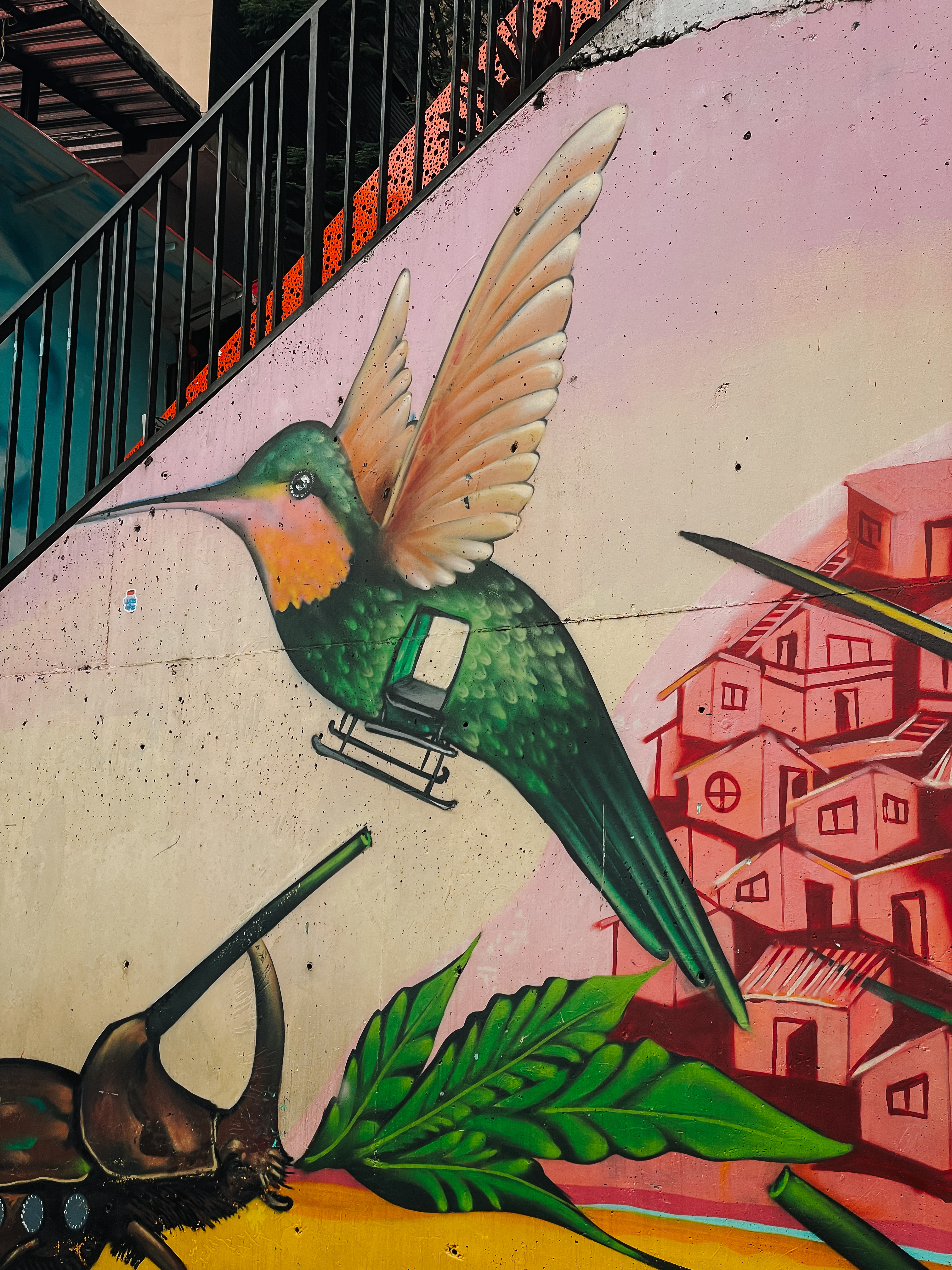

Museums & Galleries
Not only did the murals cover the exterior walls, but the art also continued inside the maze. Comuna 13 is now filled with art museums and galleries, one of which we got to explore! It was an intricate optical illusion gallery, amazingly hidden amongst the thousands of small spaces.
Here’s my boyfriend saving me from falling into the Comuna 13 abyss
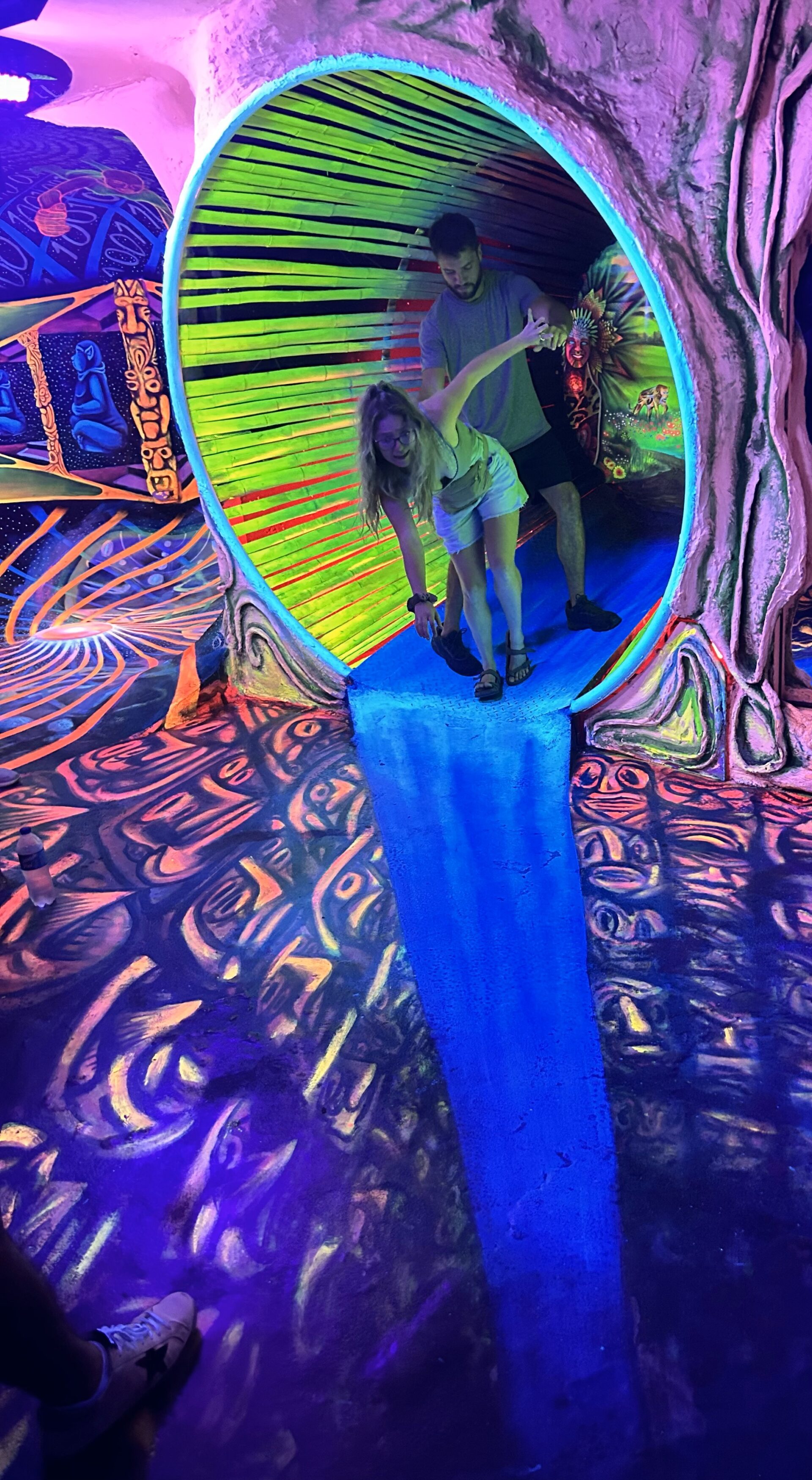
Breakdancing & Hip-hop in Comuna 13
As just one of the unexpected parts of this tour, once we arrived inside Communa 13, we immediately sat down for a breakdancing show. All throughout the community are various breakdancing teams and hip-hop artists. Music blasted as we watched the talented break dancers flip, spin, and do concerning things with their arms.
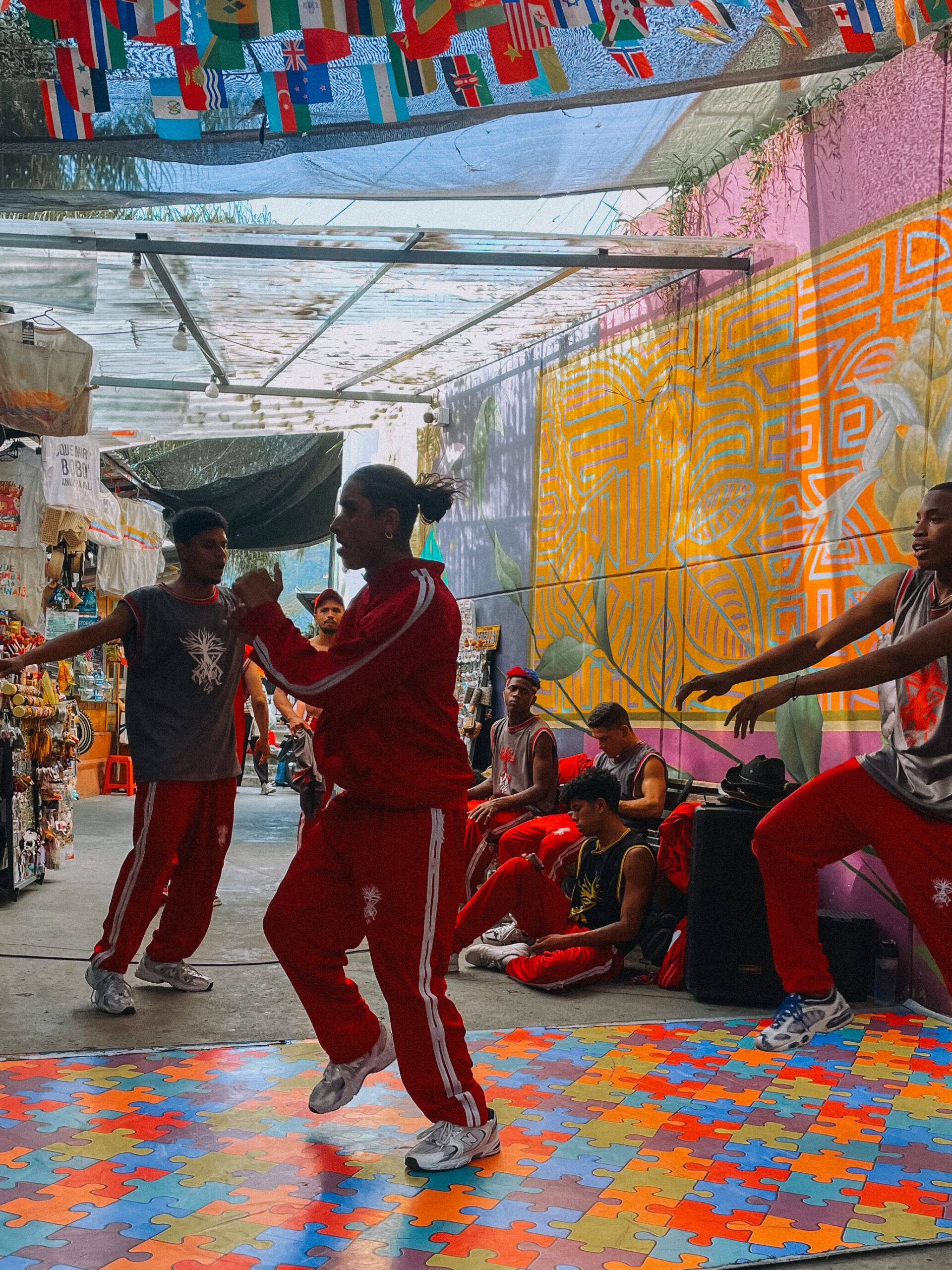
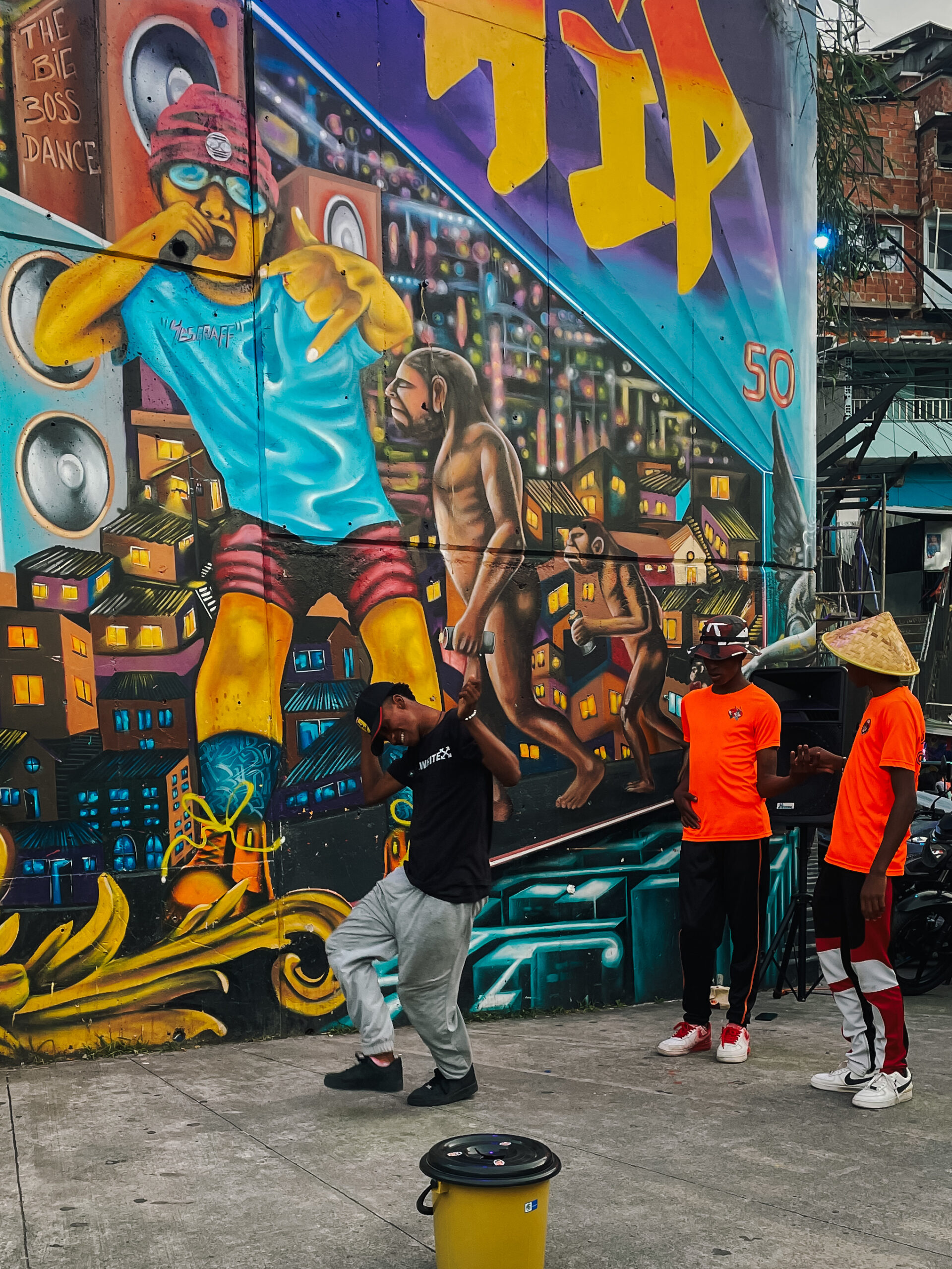
Freestyling
As we were leaving the tour, though it seems more fitting here, two artists suddenly asked if we’d listen to them rap. Just like the break dancers, they were funny and upbeat; we just couldn’t say no. They asked us all for random words and where we were from, then of course incorporated them into their freestyles. Like the dancers, they were extremely friendly and happy to perform.
Other Quirky Performers
The entertainment here is part of the new economy, creating a pretty unusual environment. We saw a man walking around with a cat wearing sunglasses, a man on stilts, as well as this cat posing on a motorcycle.
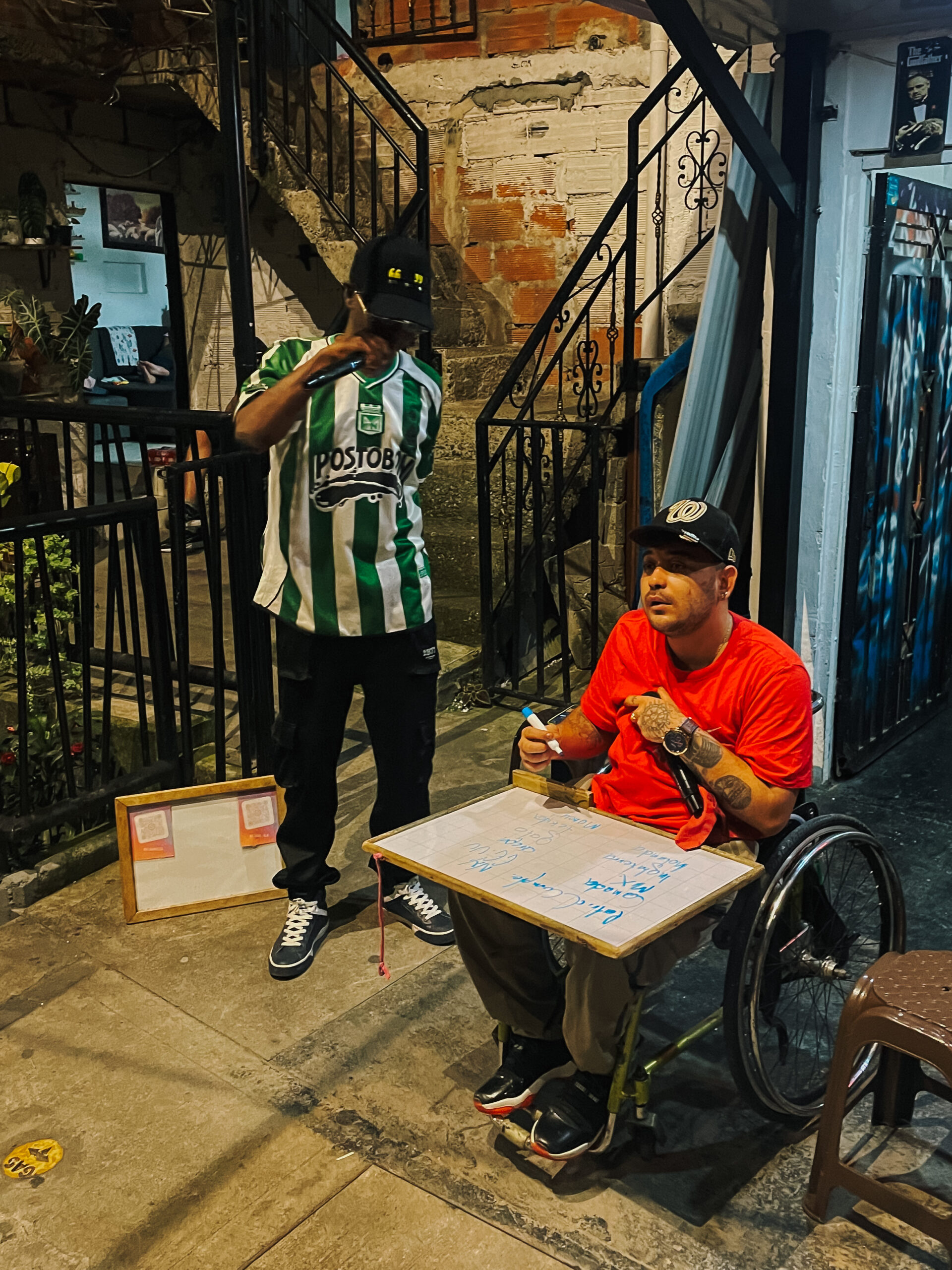

👉Tip: Bring Cash to Comuna 13 Tour
As I mentioned, despite relying on them, many of the performers don’t ask for anything in return. Even the museum was free to enter, though there was a small tip box on the door by the exit. I highly recommend bringing cash so you can give a tip and promote their new economy.
Food in Comuna 13 Tour
Also included in this tour (amazingly) was street food! As we wandered the community, there were tons of restaurants ranging from fruit stand to full service. However, serving as another pro for going with a guide, Kevin ordered traditional foods for us!
Fresh Fruit Pops
The first thing we tried were these delicious fruit popsicles, which were unlike any I’d had before. Per Kevin’s recommendation, most of us got the mango-passionfruit flavor. There were real chunks of mango and passion fruit seeds! They had other quirky flavors like cheese and avocado. After walking around all day, it was a perfectly refreshing snack.
Buñuelos
Next, we tried something I never would’ve ordered on my own. Of course, that meant it was one of the tastiest street food snacks ever. Buñuelos are deep fried cheese balls. They were crispy on the outside, but soft and sweet in the center. It wasn’t filled with hard cheese like you’ll find in cheap mozzarella sticks, but warm, gooey cheese instead. It was like a crispy, sweet, grilled cheese!


Exotic fruit
Though this wasn’t even planned, Kevin graciously grabbed some of the fruit he saw us eyeing from one of the stands. We tried aguaymantoes, sweet and tart fruits that resemble cherry tomatoes. The best fruit was mangosteen, which had dark purple skin but sweet, white flesh on the inside. The pieces were so sweet and delicious.
Beers & Sunset Views
Kevin led us up to the top of the hill, where we could see out into the whole valley. We stopped at a small restaurant, observing the layers and layers of buildings below. Again, included in the tour, was an alcoholic beverage of your choice! One option was a local beer from Cusco.
We are lame, and ordered bottles of water, but still took part in the group’s “Cheers!” at the end of this amazing day.
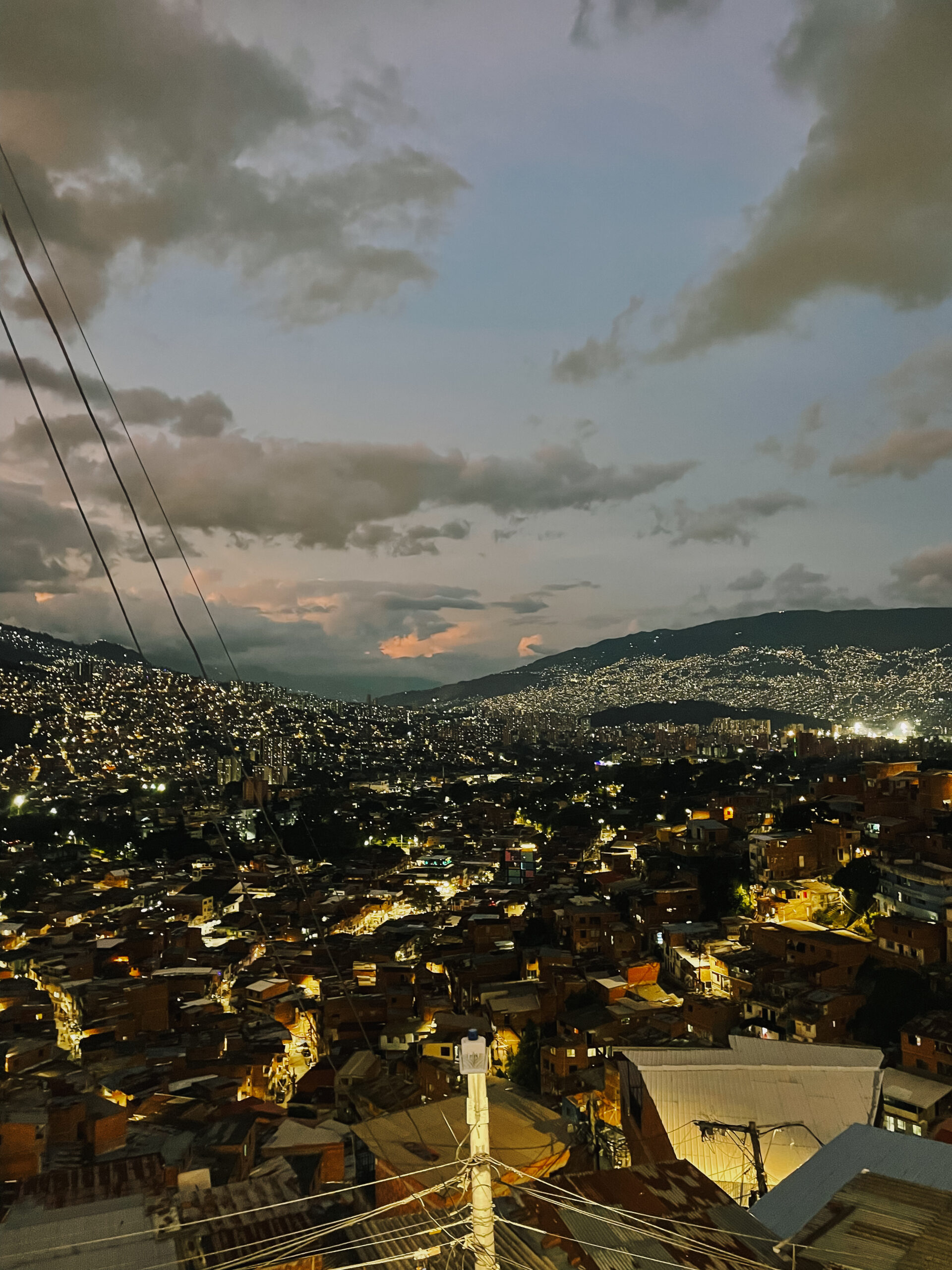
Kevin let us all enjoy our drinks as the sun set, and I really appreciated the way he didn’t rush us to leave. He was such an amazing tour guide, who we eventually figured out was staying right near us. His Comuna 13 tour was so fun and informative, we ended up treating him to burgers afterwards. (He has remained our friend throughout our month in Medellín, and I’m forever grateful I booked this tour).
That’s a Wrap!
Is Comuna 13 Worth Visiting?
Hopefully I’ve already answered this question for you, which is an intense yes! I honestly left Comuna 13 with such gratitude for having visited such a special place. It’s amazing to see somewhere with such a violent past be filled with such love and life.
If you want a similar experience to ours, I can’t grantee you’ll be gifted with Kevin as your tour guide, but here’s another link to the Comuna 13 tour we booked.
Enjoy your time in Medellín!
